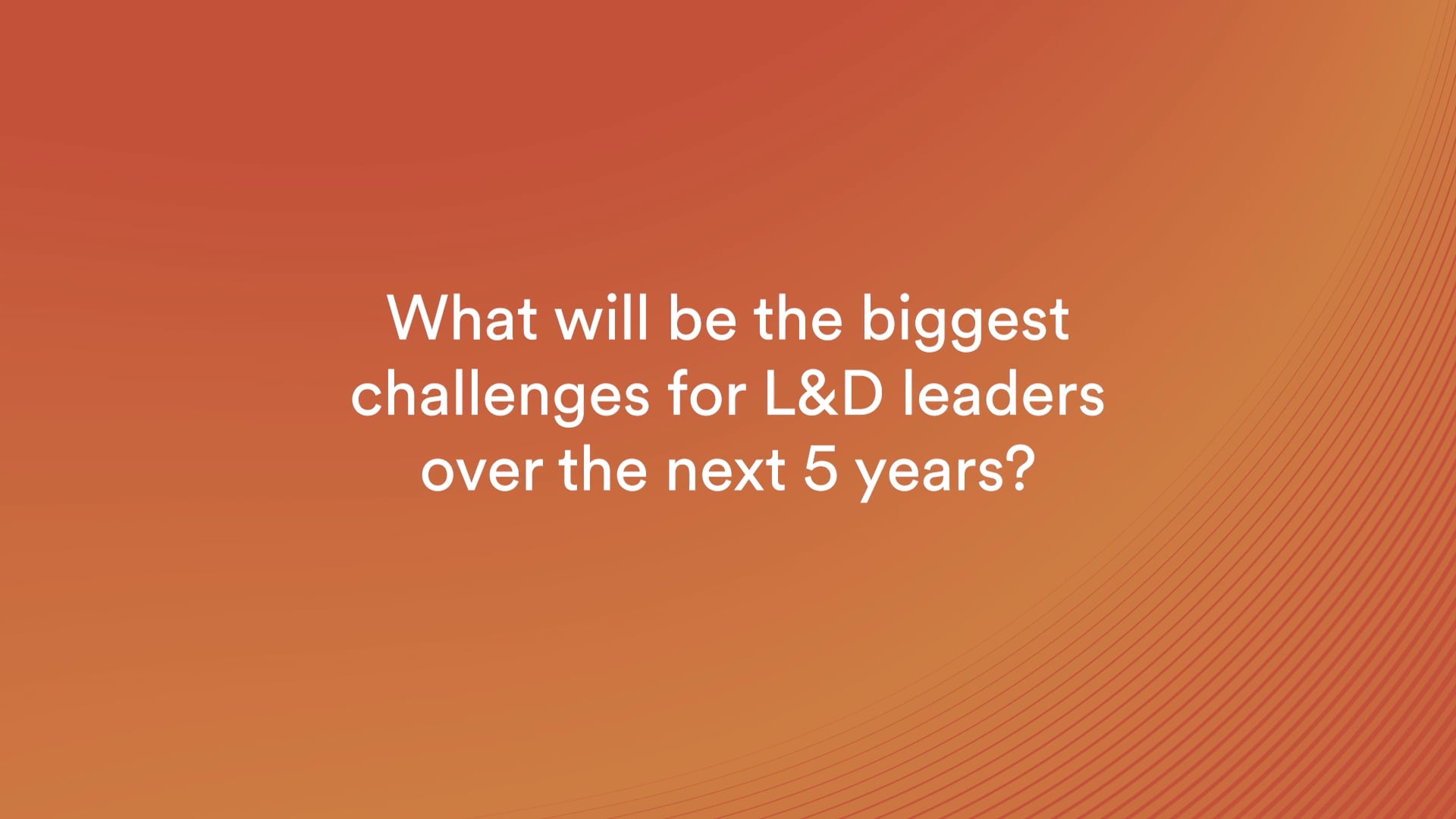7th August 2025
What will be the biggest challenges for L&D leaders over the next 5 years?
As workplaces continue to transform at speed, L&D leaders are being asked to navigate a future shaped by both technical and deeply human challenges.
7th August 2025
As workplaces continue to transform at speed, L&D leaders are being asked to navigate a future shaped by both technical and deeply human challenges.

At our 2025 Global Summit, HR and L&D professionals shared their perspectives on the critical themes shaping the future of learning – from how to lead through uncertainty, to ensuring equitable access to development, and demonstrating meaningful impact. Their insights reflect not only the complexity of the moment, but the opportunity for L&D to play a more strategic and influential role in shaping what comes next.
A pressing concern voiced by leaders is the challenge of uncertainty itself. With shifts happening geopolitically, environmentally, socially and technologically, the very idea of stable, long-term planning is being redefined.
“The biggest challenge for L&D leaders over the next few years is really grappling with the incredible uncertainty of where we're going, both on an organizational level and a societal level”
In this environment, L&D teams are being asked to support workforces not just in acquiring new knowledge, but in building adaptability, critical thinking and emotional resilience. It is a shift from providing answers to helping people ask better questions and navigate ambiguity with confidence.
Another more practical challenge is ensuring that all employees, regardless of their role, location or access to infrastructure, can engage with meaningful development opportunities. While digital learning continues to unlock flexibility and scale, it can also highlight disparities in access. For workers in operational, field-based or frontline roles, simply being able to connect to a platform can be a barrier if the right technology is not in place.
“I think [the biggest challenge is going to be] tooling. We have an LMS today, we’re looking into an LXP, but [the challenge is] making sure that everyone gets the same opportunity for individualized training, and getting away from the manual work.”
To address this, many organizations are focusing not only on improving access to technology, but also on designing learning that fits into the realities of different working environments. Learning platforms that are optimized for all devices are essential but so is making space for learning within the working day. Likewise, connecting learning directly to development goals can boost engagement and ensure that opportunities are not just available but truly accessible to everyone.
A third theme that surfaced repeatedly was impact. While L&D leaders have long known the difficulty of measuring return on investment, the expectation to demonstrate business value is only growing.
“ROI in learning is always challenging to measure, but we do annual surveys of our internal clients and we also have several surveys that measure people’s satisfaction with well-being and learning initiatives.”
The insights shared by HR leaders reflected a broader shift toward more holistic and ongoing measures of success, not just whether people completed training, but whether learning is driving development, performance and engagement in tangible ways.
While each of these challenges is distinct, they all point to a larger transformation in the role of L&D. It is not just about delivering content or facilitating skill-building. It is about shaping how organisations respond to complexity, how they build inclusive cultures, and how they grow talent in a way that is measurable, meaningful and fit for the future. For those in L&D, the next five years will be defined not just by what they teach, but by how they lead.
Interested in learning more about how to unlock the power of language learning?